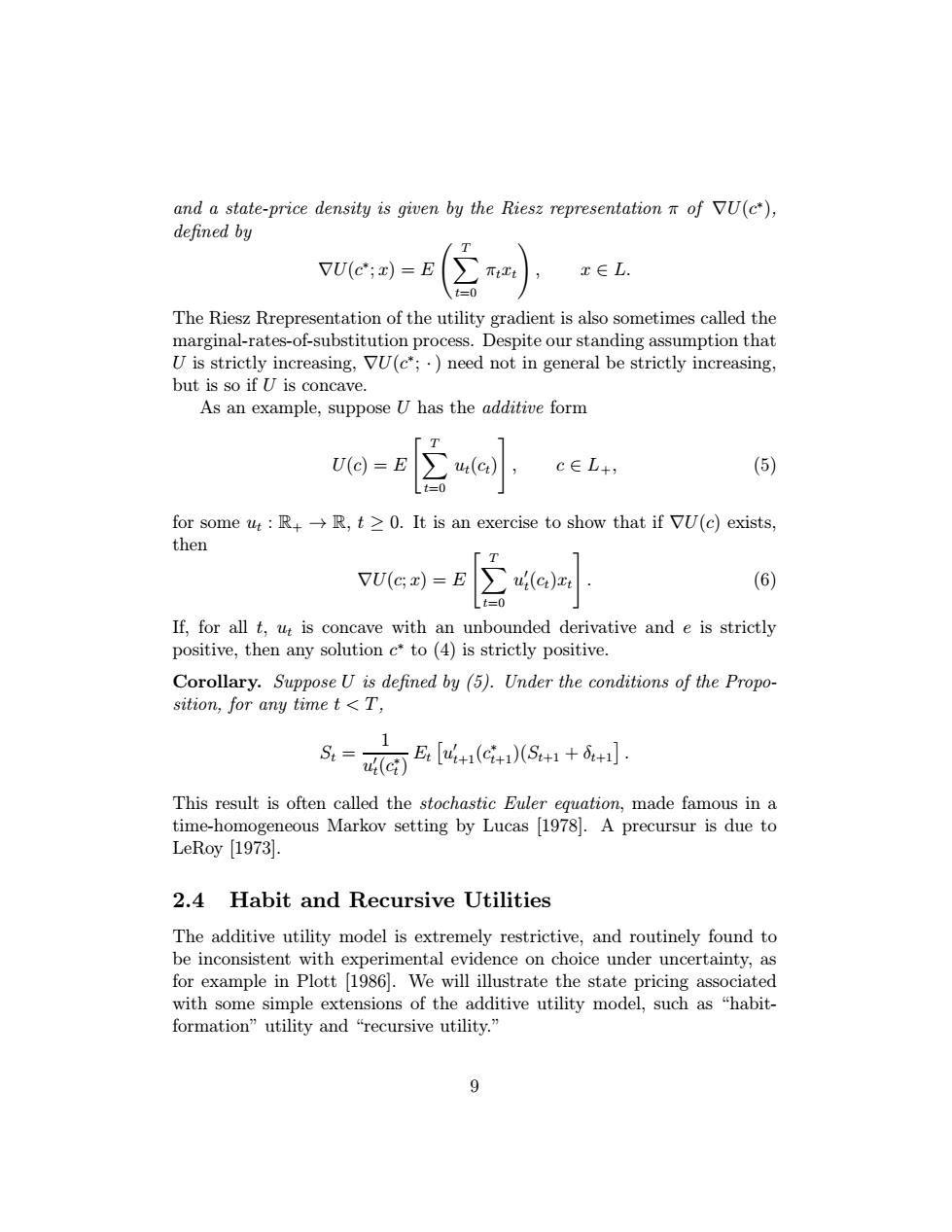正在加载图片...

and a state-price density is given by the Riesz representation n of VU(c*), defined by VU(c';x) x∈L. The Riesz Rrepresentation of the utility gradient is also sometimes called the marginal-rates-of-substitution process.Despite our standing assumption that U is strictly increasing,VU(c*;.)need not in general be strictly increasing, but is so if U is concave. As an example,suppose U has the additive form U(c) c∈L+ (5) for some ut:R>R,t >0.It is an exercise to show that if VU(c)exists, then VU(c;z)= (6) If,for all t,ut is concave with an unbounded derivative and e is strictly positive,then any solution c*to (4)is strictly positive. Corollary.Suppose U is defined by(5).Under the conditions of the Propo- sition,for any time t<T, St= n() This result is often called the stochastic Euler equation,made famous in a time-homogeneous Markov setting by Lucas [1978.A precursur is due to LeRoy [1973]. 2.4 Habit and Recursive Utilities The additive utility model is extremely restrictive,and routinely found to be inconsistent with experimental evidence on choice under uncertainty,as for example in Plott [1986].We will illustrate the state pricing associated with some simple extensions of the additive utility model,such as "habit- formation'”utility and“recursive utility.” 9and a state-price density is given by the Riesz representation π of ∇U(c∗), defined by ∇U(c∗ ; x) = E X T t=0 πtxt ! , x ∈ L. The Riesz Rrepresentation of the utility gradient is also sometimes called the marginal-rates-of-substitution process. Despite our standing assumption that U is strictly increasing, ∇U(c∗; ·) need not in general be strictly increasing, but is so if U is concave. As an example, suppose U has the additive form U(c) = E " X T t=0 ut(ct) # , c ∈ L+, (5) for some ut : R+ → R, t ≥ 0. It is an exercise to show that if ∇U(c) exists, then ∇U(c; x) = E " X T t=0 u0 t(ct)xt # . (6) If, for all t, ut is concave with an unbounded derivative and e is strictly positive, then any solution c∗ to (4) is strictly positive. Corollary. Suppose U is defined by (5). Under the conditions of the Proposition, for any time t<T, St = 1 u0 t(c∗ t ) Et u0 t+1(c∗ t+1)(St+1 + δt+1 . This result is often called the stochastic Euler equation, made famous in a time-homogeneous Markov setting by Lucas [1978]. A precursur is due to LeRoy [1973]. 2.4 Habit and Recursive Utilities The additive utility model is extremely restrictive, and routinely found to be inconsistent with experimental evidence on choice under uncertainty, as for example in Plott [1986]. We will illustrate the state pricing associated with some simple extensions of the additive utility model, such as “habitformation” utility and “recursive utility.” 9��